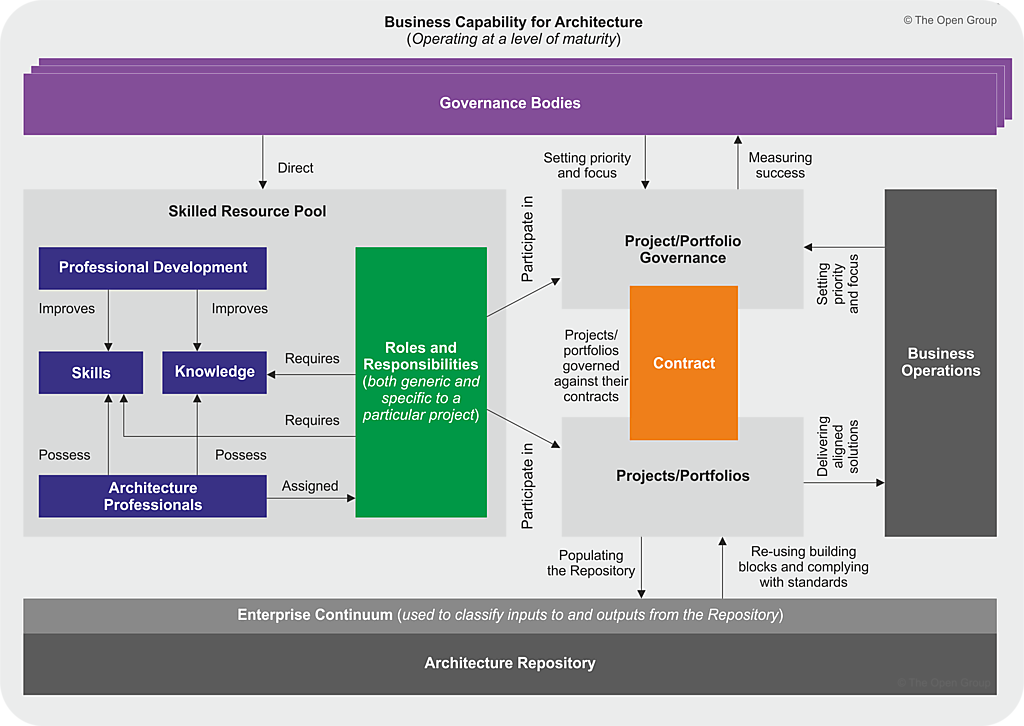Introduction
In the ever-evolving landscape of Information Technology (IT), organizations seek effective methods to enhance their development processes and gain better control over their architectural endeavors. The Architecture Capability Framework, deeply rooted in the Capability Maturity Models (CMM), emerges as a powerful tool within The Open Group Architecture Framework (TOGAF). This framework provides organizations with a structured approach to gradually improve their IT-related processes. One prominent aspect of this framework is the IT Architecture Capabilities Maturity Model (ACMM).

The Landscape of Capability Maturity Models
TOGAF’s Architecture Capability Framework draws inspiration from various Capability Maturity Models, each tailored to address specific aspects of organizational processes. Some notable models include the Capability Maturity Model Integration (CMMI), Software Acquisition Capability Maturity Model (SA-CMM), Systems Engineering Capability Maturity Model (SE-CMM), People Capability Maturity Model (P-CMM), IDEAL Life Cycle Model for Improvement, and the IT Architecture Capabilities Maturity Model (ACMM).
Components of the ACMM
The ACMM, a crucial part of the Architecture Capability Framework, comprises three main sections:
- IT Architecture Maturity Model: This section defines the six levels of maturity for nine key architecture characteristics. The levels range from 0 (None) to 5 (Measured), depicting the evolutionary journey an organization undertakes in enhancing its architectural capabilities.
- IT Architecture Characteristics of Processes at Different Maturity Levels: The nine architecture characteristics provide a comprehensive view of an organization’s architecture capabilities. These include IT architecture process, IT architecture development, business linkage, senior management involvement, operating unit participation, architecture communication, IT security, architecture governance, and IT investment and acquisition strategy.
- The ACMM Scorecard: The ACMM scorecard acts as a monitoring and assessment tool. It allows organizations to gauge their current maturity level in each of the nine characteristics, enabling a clear understanding of strengths, weaknesses, and areas for improvement.
Levels and Characteristics
- Levels: The six maturity levels (None, Initial, Under Development, Defined, Managed, Measured) serve as milestones, representing the organization’s progress in building and refining its IT architecture capabilities.
- Characteristics: The nine architecture characteristics offer a granular perspective on various dimensions of an organization’s architecture. From the intricacies of IT architecture processes to the strategic aspects of IT investment and acquisition strategy, each characteristic contributes to the overall maturity of the organization.
Conclusion
The Architecture Capability Framework in TOGAF, particularly the IT Architecture Capabilities Maturity Model, empowers organizations to systematically enhance their IT-related development processes. By leveraging the structured approach of maturity levels and characteristics, organizations can not only gain control over their architecture but also pave the way for continuous improvement. As the technological landscape continues to evolve, embracing frameworks like ACMM becomes imperative for organizations aspiring to thrive in the dynamic realm of Information Technology.